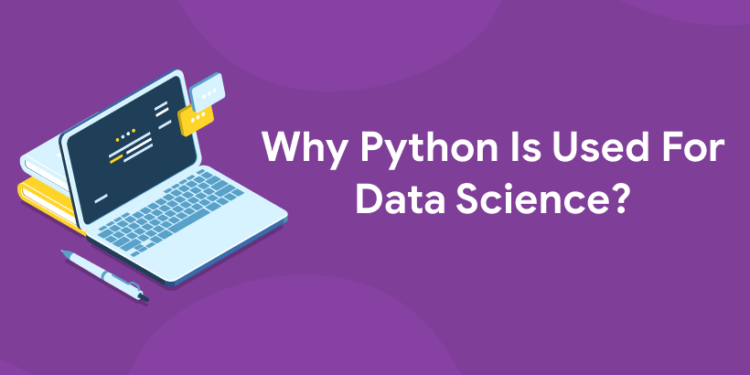Table of Contents
Key Takeaways:
- Python powers nearly 90% of today’s data science workflows and remains the most popular language in AI and machine learning projects.
- Its versatile, beginner-friendly syntax combined with a massive library ecosystem simplifies complex tasks like data wrangling, visualization, and predictive modeling.
- An active global community and constant innovations (e.g., AI coding assistants, cloud integrations) future-proof Python for technology careers in 2025.
- Python’s scalability lets data professionals handle everything from small datasets to big data, real-time edge computing, and cloud deployments.
- Mastering Python opens doors to high-paying data science roles with growing demand worldwide, especially when paired with practical project experience.
Introduction
In today’s fast-evolving tech scene, Python has transformed from a simple scripting language into the heartbeat of data science and AI innovation. Imagine being able to analyze vast oceans of data, build predictive models, and even train powerful AI systems — all with clean, readable code that anyone can learn. That’s the magic of Python. Whether you want to explore machine learning, tame big data, or craft compelling data visualizations, Python provides the toolkit that turns ideas into reality.
Beyond its practical uses, Python’s rise reflects an exciting shift: data science now belongs to everyone. Gone are the days when only engineers or statisticians could participate. With Python’s human-friendly syntax and welcoming community, it’s never been easier to join the ranks of data professionals shaping the future. If you’re wondering whether Python is right for you or why it dominates this space, read on. The reasons are as logical as they are inspiring.
What Makes Python Perfect for Data Science?
1: Which of the following algorithms is most suitable for classification tasks?
1. Industry Dominance and Broad Adoption
- Python is used by over 90% of data scientists globally in 2024-25 and dominates AI-driven projects in finance, healthcare, retail, and tech startups.
- Its popularity outpaces competitors like R, which remains popular for statistical work but lacks Python’s versatility and ease of integration with production systems.
- Companies from Netflix and Uber to Google rely on Python for building scalable data platforms and AI-powered services.
2. Beginner-Friendly and Human-Readable
- Python’s syntax reads almost like English, making concepts like variables, functions, and loops intuitive to grasp.
- No complex symbols or boilerplate code means learning to write meaningful programs is quicker, lowering barriers for beginners.
- This ease accelerates your learning curve, helping you focus more on solving real data problems than wrestling with language quirks.
3. Rich, Specialized Library Ecosystem
- Libraries are Python’s superpower. They provide ready-made, optimized tools for nearly every data science task.
- Data manipulation: Pandas for easy-to-use data structures, NumPy for powerful matrix math, Dask and Vaex for handling massive datasets beyond memory limits.
- Visualization: Matplotlib and Seaborn create beautiful charts to communicate insights.
- Machine learning & AI: Scikit-learn for classical ML algorithms, TensorFlow and PyTorch for deep learning and AI models.
- Natural Language Processing (NLP): Hugging Face Transformers for text and language AI breakthroughs.
- Data engineering: Apache Airflow and PySpark for automating complex data workflows and distributed computing.
4. Fast Prototyping and Scalability
- Jupyter Notebooks let you write, test, and share code interactively with markdown explanations and visual outputs in one place.
- Python scales effortlessly from small projects on laptops to distributed cloud infrastructure processing terabytes of data.
- This flexibility suits both research experimentation and production-grade deployment.
5. Integration and Versatility
- Python interfaces easily with SQL databases, big data tools (e.g., Hadoop), and cloud services (AWS, Azure, GCP).
- It supports everything from backend web services (Django/Flask) to automation scripts, helping teams build full-stack solutions.
- This interoperability fosters collaboration among data scientists, engineers, and business stakeholders.
🚀 Start Coding Today! Enroll Now with Easy EMI Options. 💳✨
Equip yourself with in-demand skills to land top-tier roles in the data-driven world.
Start Learning Now with EMI OptionsTop Python Libraries for Data Science [2025 Update]
| Library | Purpose | What It Does | Best For |
|---|---|---|---|
| NumPy | Numerical computing | Core library for multi-dimensional arrays and math functions | Fast numerical calculations & matrix math |
| Pandas | Data manipulation | Easy handling of tabular data with DataFrames | Cleaning, filtering, reshaping datasets |
| Matplotlib | Visualization | Plotting basic charts and graphs | Static & publication-quality visualizations |
| Seaborn | Statistical visualization | High-level plots like heatmaps, violin plots | Statistical data exploration |
| Scikit-learn | Machine learning | Implements core ML algorithms like regression, classification | ML model building for beginner to intermediate |
| TensorFlow | Deep learning | Framework for neural networks and large AI models | Deep learning for computer vision, NLP |
| PyTorch | Deep learning | Flexible DL framework, popular in research | Research and experimental AI models |
| Dask | Big data processing | Scales Pandas and NumPy operations across CPUs and clusters | Parallel/distributed data manipulation |
| Vaex | Out-of-core dataframes | Works on datasets bigger than RAM | Fast analytics on billions of rows |
| Hugging Face | NLP and transformers | Pretrained models for language understanding | Chatbots, sentiment analysis, text mining |
| PySpark | Big data & distributed computing | Python API for Apache Spark cluster computing | Scalable data processing in big data setups |
| Apache Airflow | Workflow automation | Manages complex ETL and data pipeline tasks | Workflow scheduling and monitoring |
Key Usage Tips
- Start small: Use Pandas and Matplotlib for simple data cleaning and charts.
- Explore ML: Try Scikit-learn for beginner-friendly ML models.
- Scale up: Learn Dask or PySpark when data outgrows your computer memory.
- Dive into AI: Experiment with TensorFlow or Hugging Face for cutting-edge AI projects.
Python vs Other Data Science Languages
| Feature | Python | R | SQL |
|---|---|---|---|
| Primary use | Data science, AI, automation | Statistical data analysis | Managing relational databases |
| User-friendliness | Easy to learn & read | More syntax complexity | Moderate (query-focused) |
| Ecosystem & libraries | Largest & most diverse | Strong in statistics | Specific for DB queries |
| Scalability | High (local to cloud) | Limited outside statistics | High for DB tasks |
| 2025 popularity | 90%+ preferred | Niche but stable | Widely used for databases |
| Career prospects | Broad & growing | Specialized fields | Data management roles |
- Machine Learning & AI: Fraud detection at banks, recommendation engines at Netflix, and personalized ads on social networks rely heavily on Python-based models.
- Big Data Analysis: Tools like PySpark enable telecom companies and ecommerce platforms to analyze and extract insights from multi-terabyte datasets.
- Natural Language Processing: Hugging Face models power chatbots, sentiment analysis, and automated customer support systems used by businesses worldwide.
- Data Visualization & Reporting: Python’s libraries help scientists, analysts, and decision-makers plot trends, discover anomalies, and share results with stakeholders.
- Automation & Data Pipelines: Python scripts automate repetitive data cleaning, integration, and reporting, boosting business productivity.
“Get hands-on with our python course – sign up for a free demo!”
Getting Started Guide: From Zero to Data Scientist
- Install Python 3.x: Download the latest version from the official site.
- Set up Jupyter Notebooks: For interactive data exploration and code documentation.
- Learn core libraries: Start with Pandas (data frames) and NumPy (arrays).
- Explore Visualization: Use Matplotlib and Seaborn to plot graphs.
- Build ML models: Practice with Scikit-learn on popular datasets like Titanic or Iris.
- Scale up: Familiarize yourself with PySpark or Dask for larger datasets.
- Join the community: Participate in forums like Stack Overflow, GitHub, Kaggle, and local meetups.
- Build projects: Create mini-projects showcasing data cleaning, visualization, and predictive analytics.
🚀 Start Coding Today! Enroll Now with Easy EMI Options. 💳✨
Equip yourself with in-demand skills to land top-tier roles in the data-driven world.
Start Learning Now with EMI OptionsCareer Benefits and Salary Trends
- Data scientists proficient in Python earn competitive salaries globally. In India, median salaries range from ₹10 to ₹15 lakh, with top companies offering more.
- The US market pays over $95,000 on average, with demand for Python skills expected to grow 28% through 2026.
- Companies prioritize candidates with strong project portfolios demonstrating real-world Python data skills.
- Python skills open pathways to diverse roles: data analyst, ML engineer, AI developer, and data engineer.
Entri’s AI-Powered Data Science Course: Your Fast Track to Success
Unlock your potential with Entri’s Data Science Course:
- AI-enhanced learning: Use built-in AI tools and project recommendations personalized to your pace and skill.
- Hands-on projects: Learn by doing with real datasets and step-by-step code walkthroughs.
- Placement assistance: Career mentorship, resume building, interview prep, and direct industry connections.
- Live support: Expert instructors and community support to clear doubts anytime.
- Cloud & AI Integration: Master big data tools, AI frameworks, and deployment techniques.
- Human-centric curriculum: Designed with human learners in mind — no jargon, just practical, career-focused skills.
Take the leap to become a job-ready data scientist in 2025 with Entri’s proven, interactive course.
Conclusion
Python is not just a tool — it’s the foundation of modern data science and AI innovation. Its ease of use, vast libraries, and adaptability empower learners and professionals to create transformative data solutions. Whether you are just starting or aiming to upgrade your skill set in 2025, mastering Python is your gateway to a rewarding career.
Want to be among the next generation of data scientists shaping the future? Enroll in Entri’s AI-powered Data Science Course today and turn your data dreams into reality!
Related Articles
🚀 Start Coding Today! Enroll Now with Easy EMI Options. 💳✨
Equip yourself with in-demand skills to land top-tier roles in the data-driven world.
Start Learning Now with EMI OptionsFrequently Asked Questions
Why is Python the top choice for data science in 2025?
Because it combines simplicity with a powerful ecosystem and unparalleled community support, making complex tasks accessible and scalable.
Can someone without prior coding experience learn Python for data science?
Absolutely! Python’s clear syntax and abundant learning resources make it ideal for beginners.
What are must-learn Python libraries for a data science beginner?
Start with Pandas, NumPy, Matplotlib for basics; then move to Scikit-learn for machine learning and TensorFlow/PyTorch for deep learning.
How important is Python for a career in data science?
Extremely—almost every data science job today requires Python skills alongside domain knowledge.
How do I build a portfolio to impress recruiters?
Work on small real-world projects, share your code on GitHub, and document your process clearly.














